North American Soil Degradation: Processes, Practices, and Mitigating Strategies
Abstract
:1. Introduction
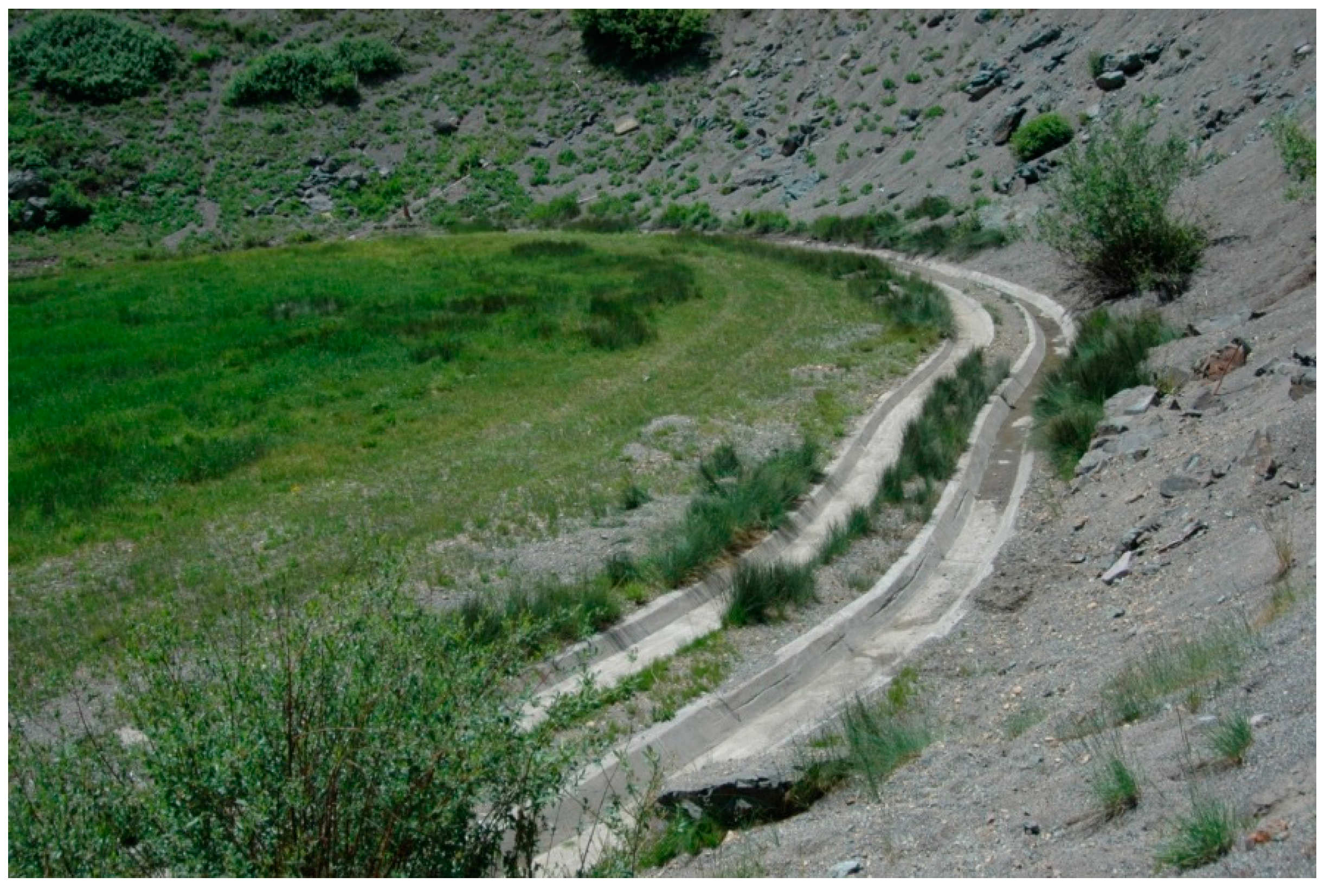
2. Processes and Practices Associated with Soil Degradation
2.1. Tillage
2.2. Degradation of Soil Organic Matter
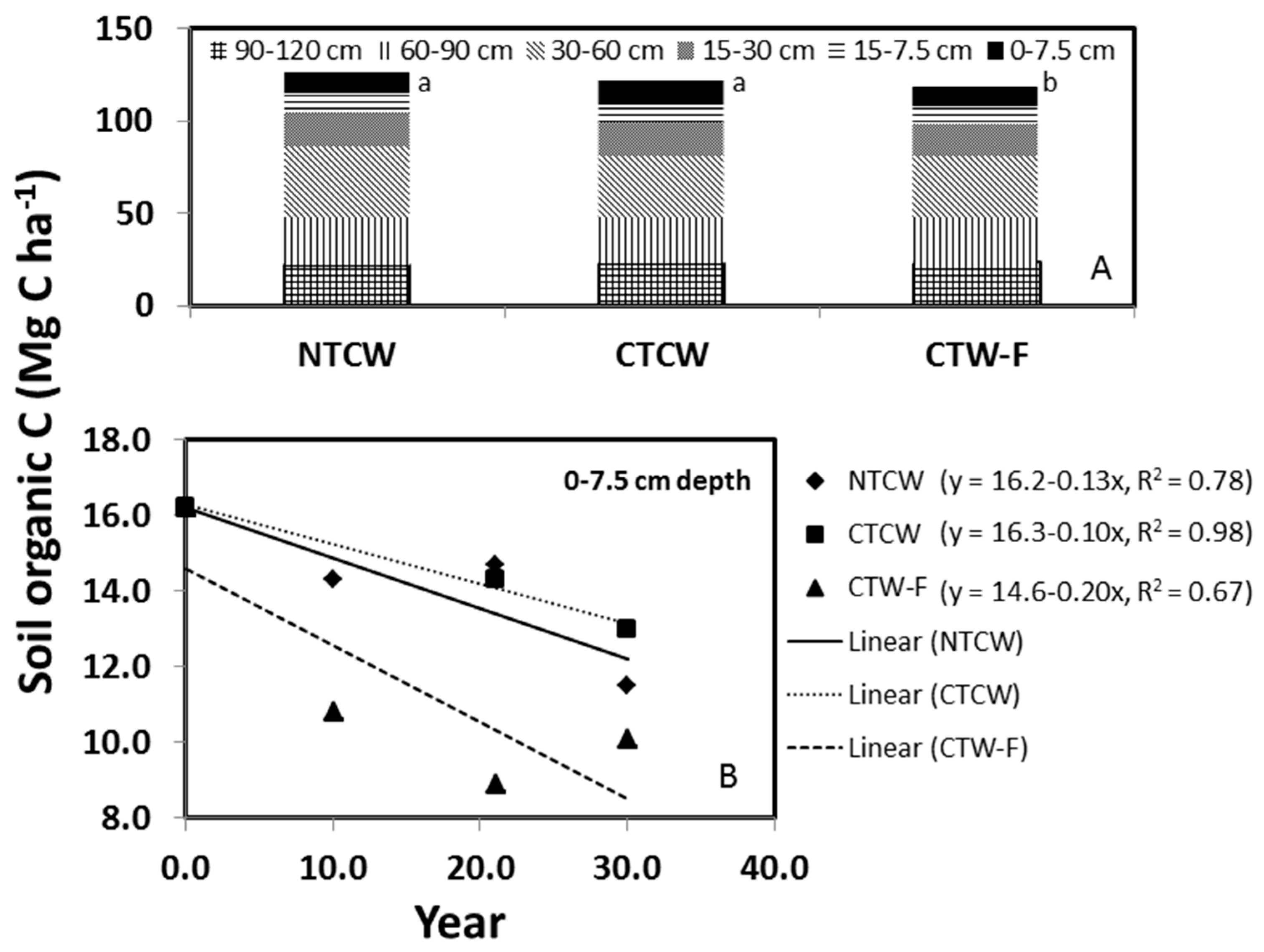
2.3. Degradation of Soil Physical Properties
2.4. Soil Degradation through Wind and Water Erosion
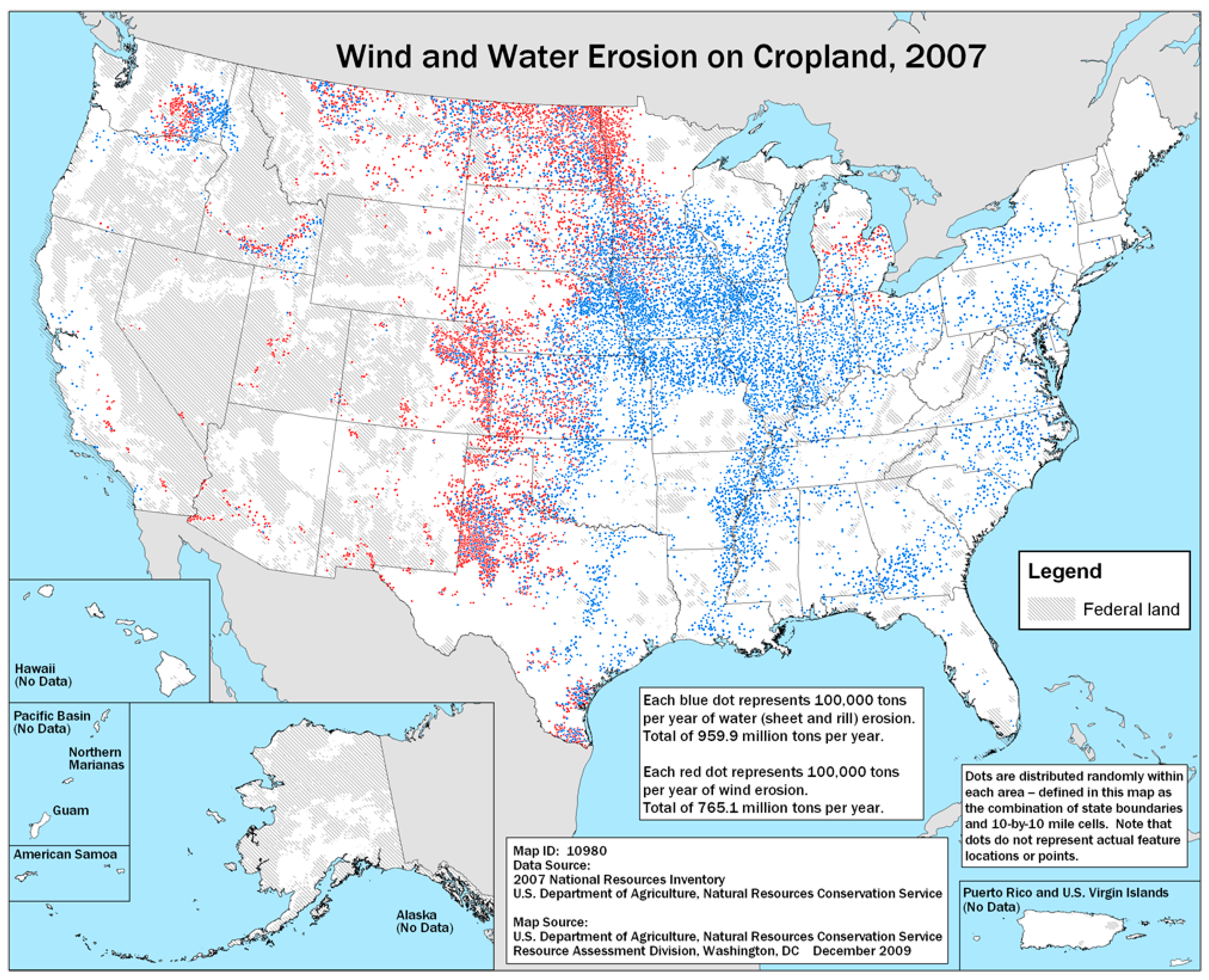
2.5. Chemical Degradation
2.5.1. Nutrient Depletion
| Chemical property | Soil Depth (cm) | Treatment † | ||
|---|---|---|---|---|
| NT-CW | CT-CW | CT-WF | ||
| Olsen-P (mg kg−1) | 0–7.5 | 36.8 a ‡ | 40.0 a | 25.0 b |
| 7.5–15 | 2.8 a | 5.5 a | 4.9 a | |
| K (mg kg−1) | 0–7.5 | 331 a | 331 a | 272 b |
| 7.5–15 | 279 a | 282 a | 186 b | |
| Ca (mg kg−1) | 0–7.5 | 989 b | 894 b | 1294 a |
| 7.5–15 | 1597 a | 1606 a | 2359 a | |
| Mg (mg kg−1) | 0–7.5 | 212 b | 193 b | 253 a |
| 7.5–15 | 340 b | 350 b | 433 a | |
| Na (mg kg−1) | 0–7.5 | 14.5 a | 14.8 a | 12.4 b |
| 7.5–15 | 14.4 a | 14.3 a | 15.5 a | |
| SO4-S (mg kg−1) | 0–7.5 | 6.8 a | 6.3 a | 8.0 a |
| 7.5–15 | 3.5 a | 3.5 a | 8.1 a | |
| Cation exchange capacity (cmolc kg−1) | 0–7.5 | 14.3 a | 14.5 a | 11.9 b |
| 7.5–15 | 11.6 a | 12.9 a | 15.9 a | |
2.5.2. Acidification
| Tillage and Cropping sequence | pH at the soil depth | |||||
|---|---|---|---|---|---|---|
| 0–7.5 cm | 7.5–15 cm | 15–30 cm | 30–60 cm | 60–90 cm | 90–120 cm | |
| NT-CW | 5.33 ab † | 6.50 ab | 7.60 a | 8.35 a | 8.58 a | 8.75 a |
| CT-CW | 5.05 b | 6.15 b | 7.58 a | 8.25 b | 8.63 a | 8.70 a |
| CT-WF | 5.73 a | 7.03 a | 7.65 a | 8.25 a | 8.50 a | 8.66 a |
| Bulk density (Mg m−3) at the soil depth | ||||||
| 0–7.5 cm | 7.5–15 cm | 15–30 cm | 30–60 cm | 60–90 cm | 90–120 cm | |
| NT-CW | 1.15 b † | 1.48 a | 1.49 a | 1.67 a | 1.52 a | 1.64 a |
| CT-CW | 1.26 b | 1.38 a | 1.43 a | 1.55 a | 1.51 a | 1.68 a |
| CT-WF | 1.45 a | 1.48 a | 1.53a | 1.62 a | 1.60 a | 1.70 a |
2.5.3. Salinization
3. Mitigation Strategies for Reversing Soil Degradation
3.1. Tillage Management
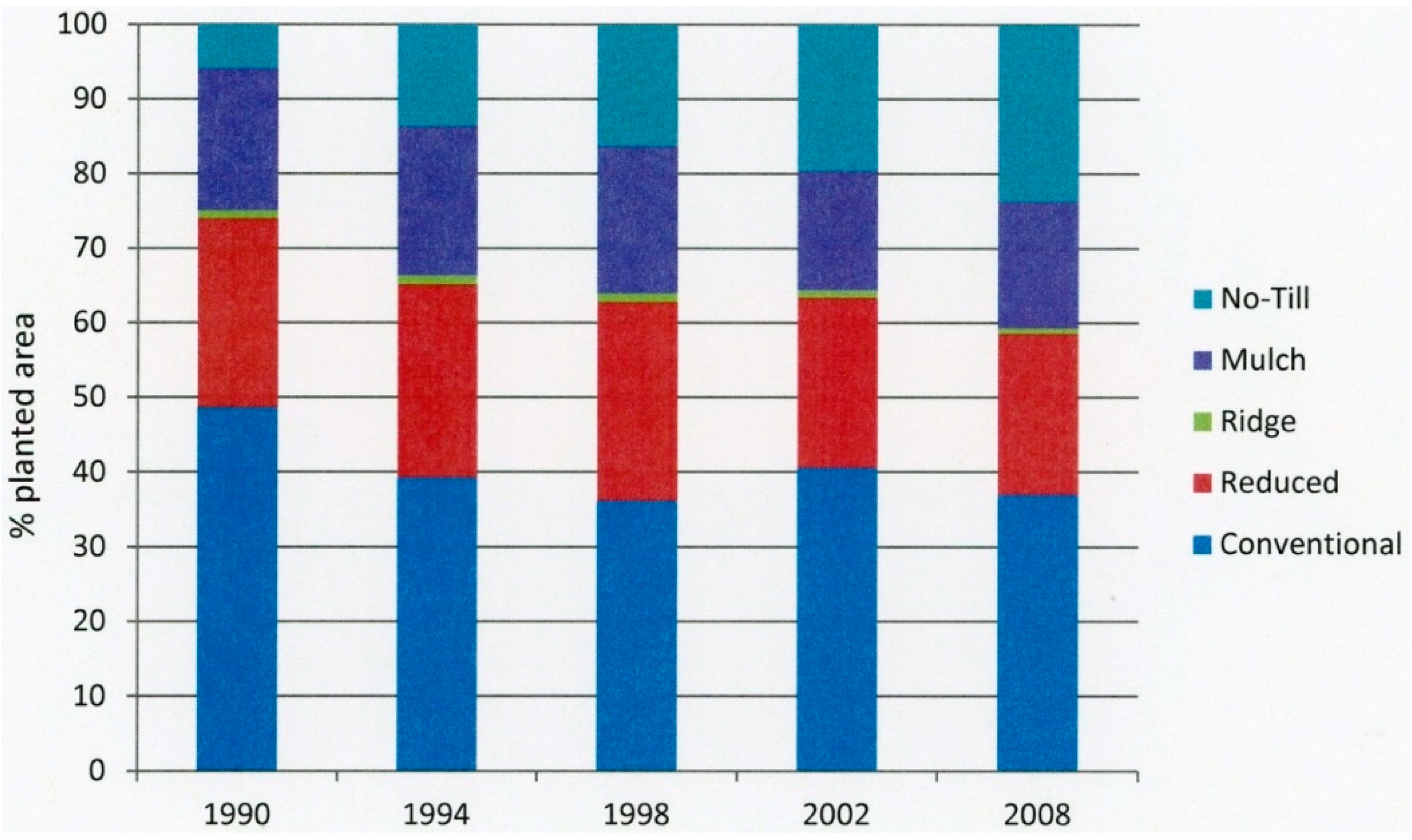
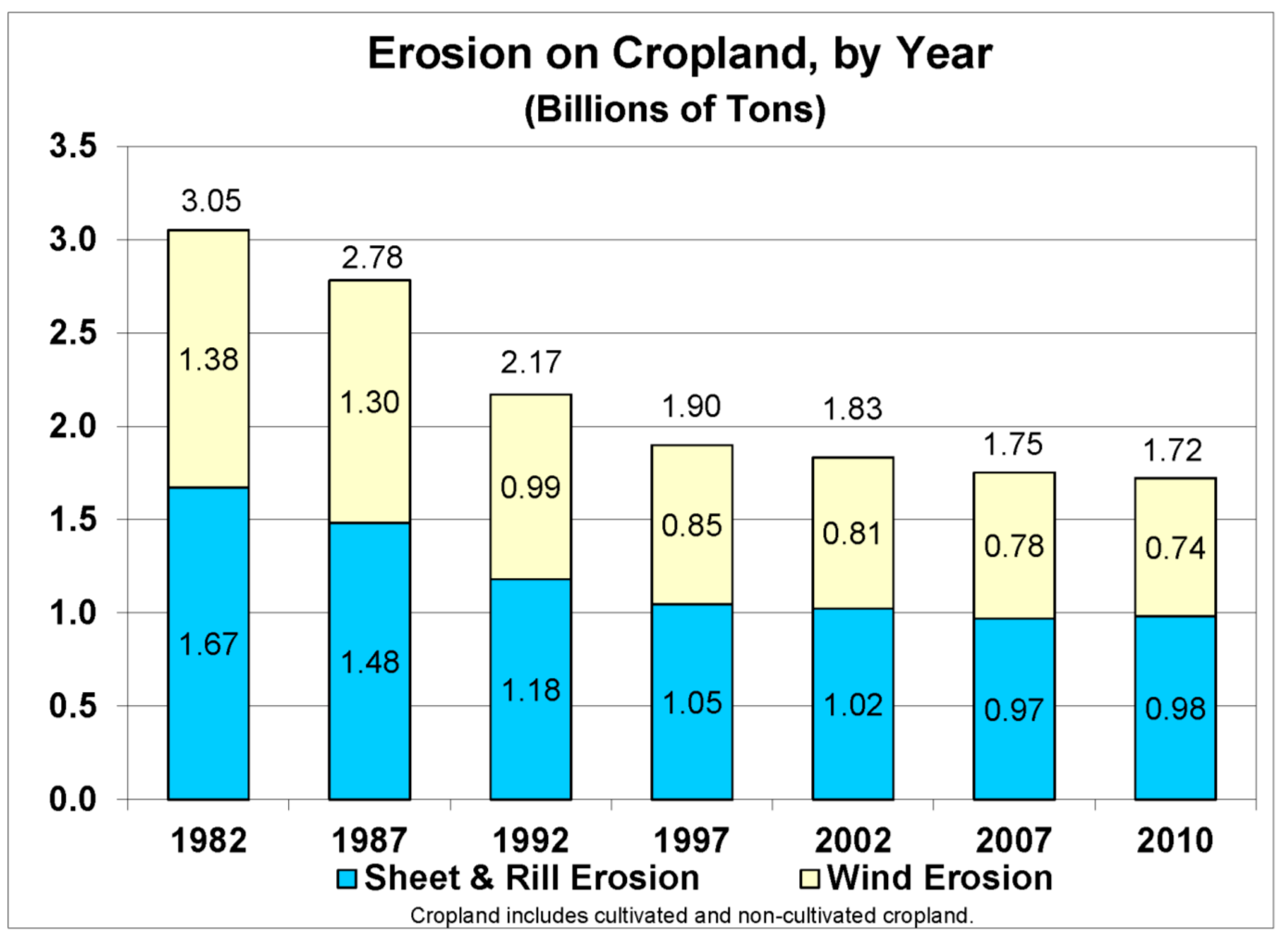
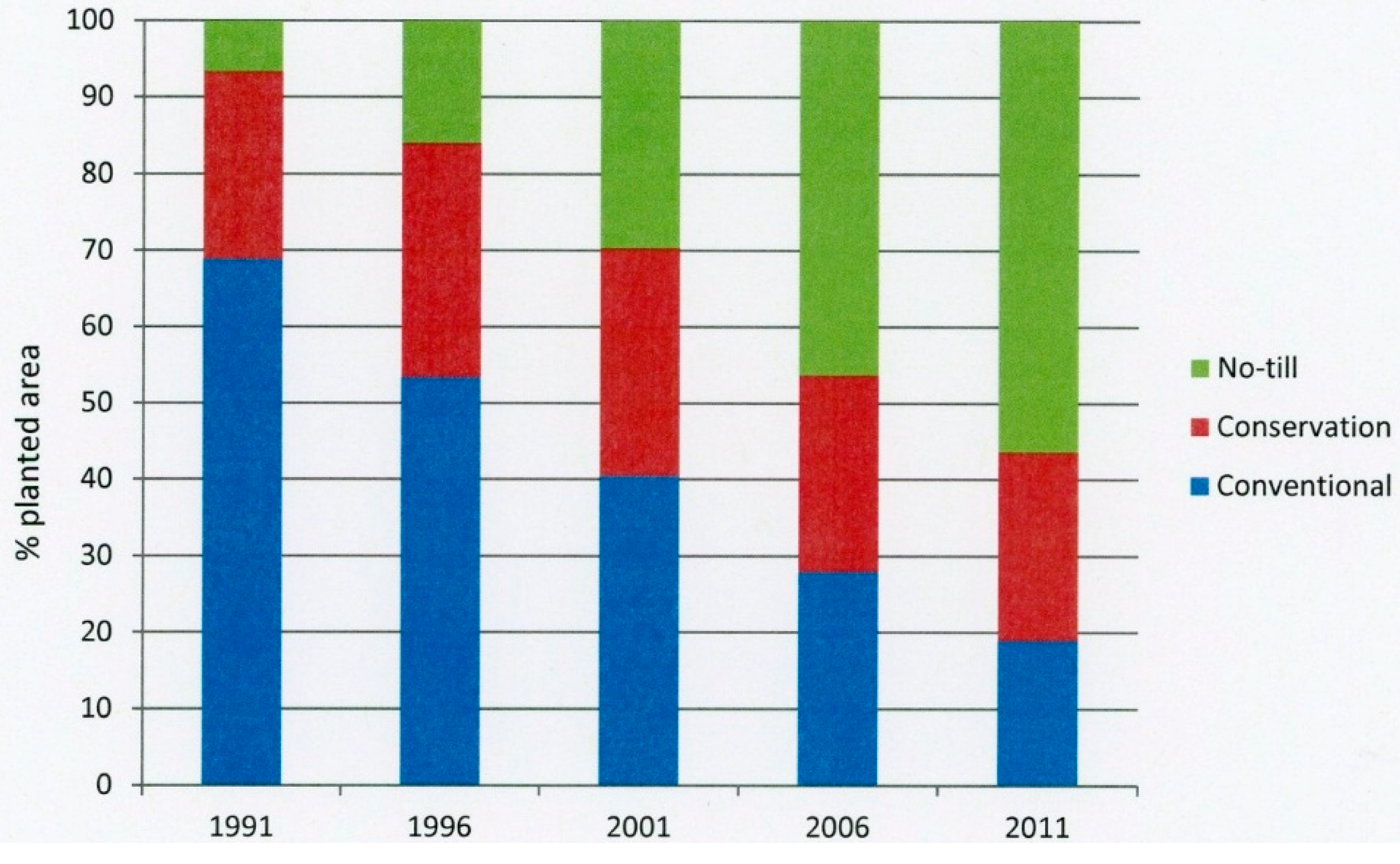
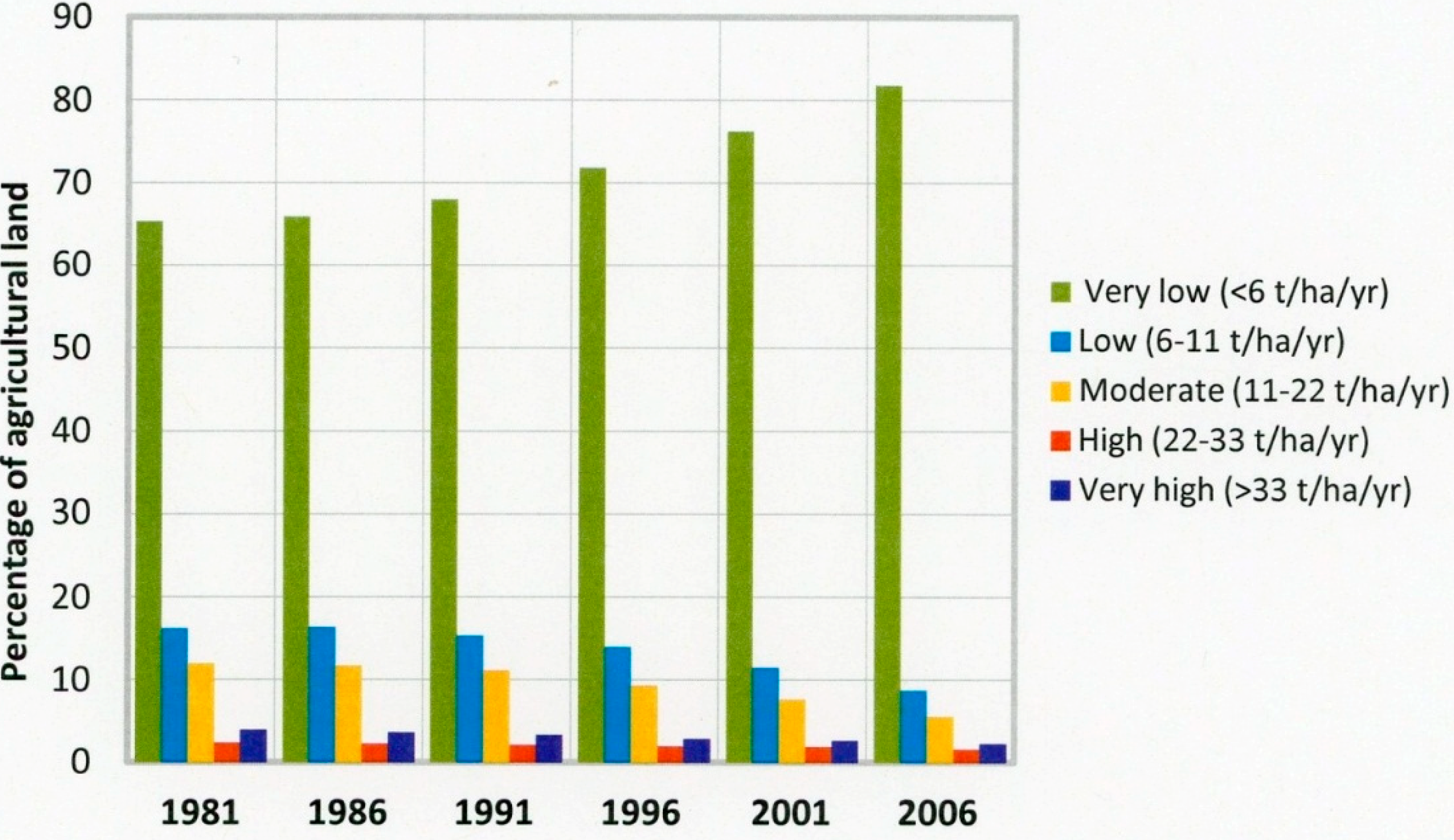
3.2. Cover Crops and Carbon Sequestration
3.3. Intensified Cropping Systems
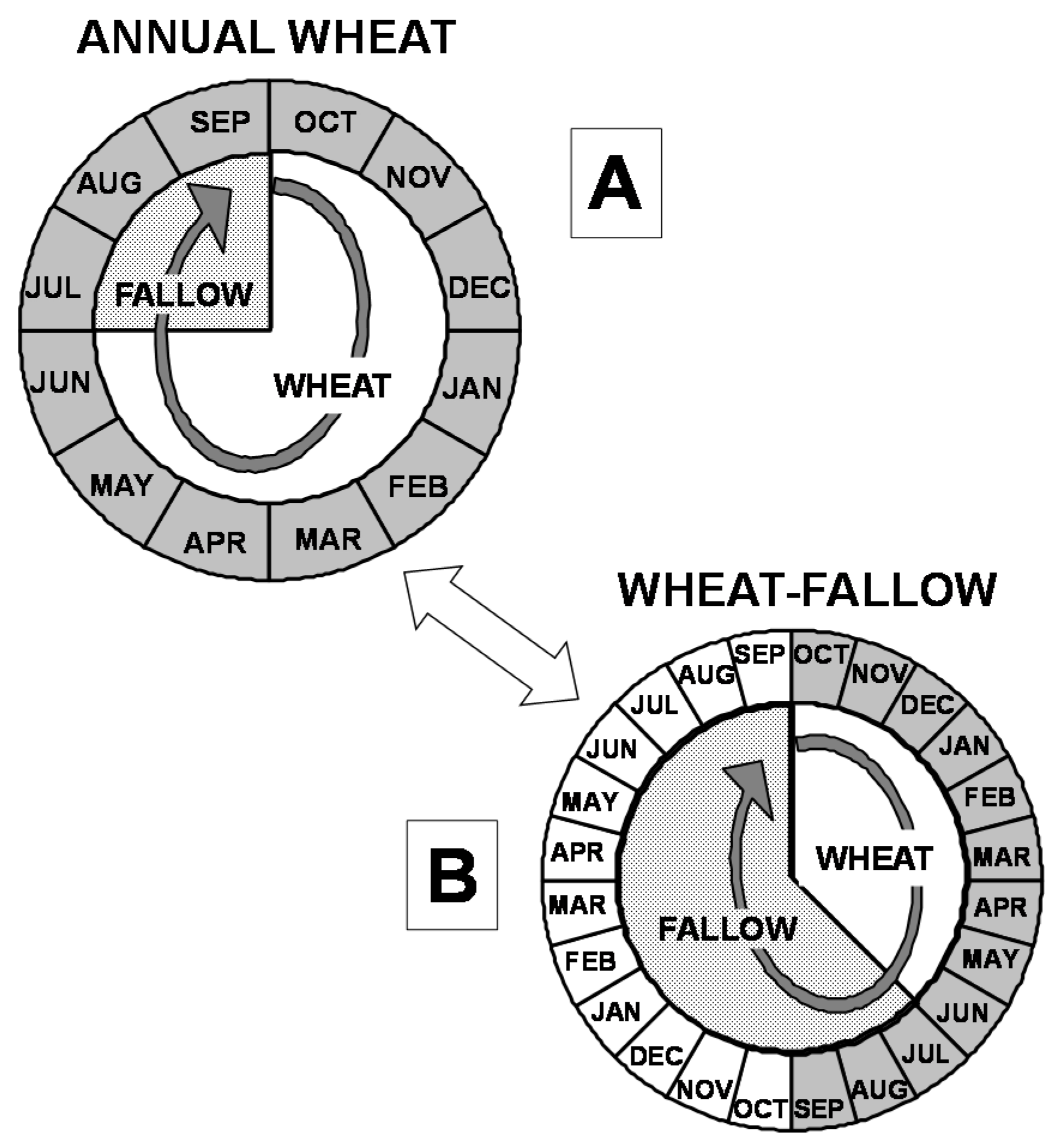
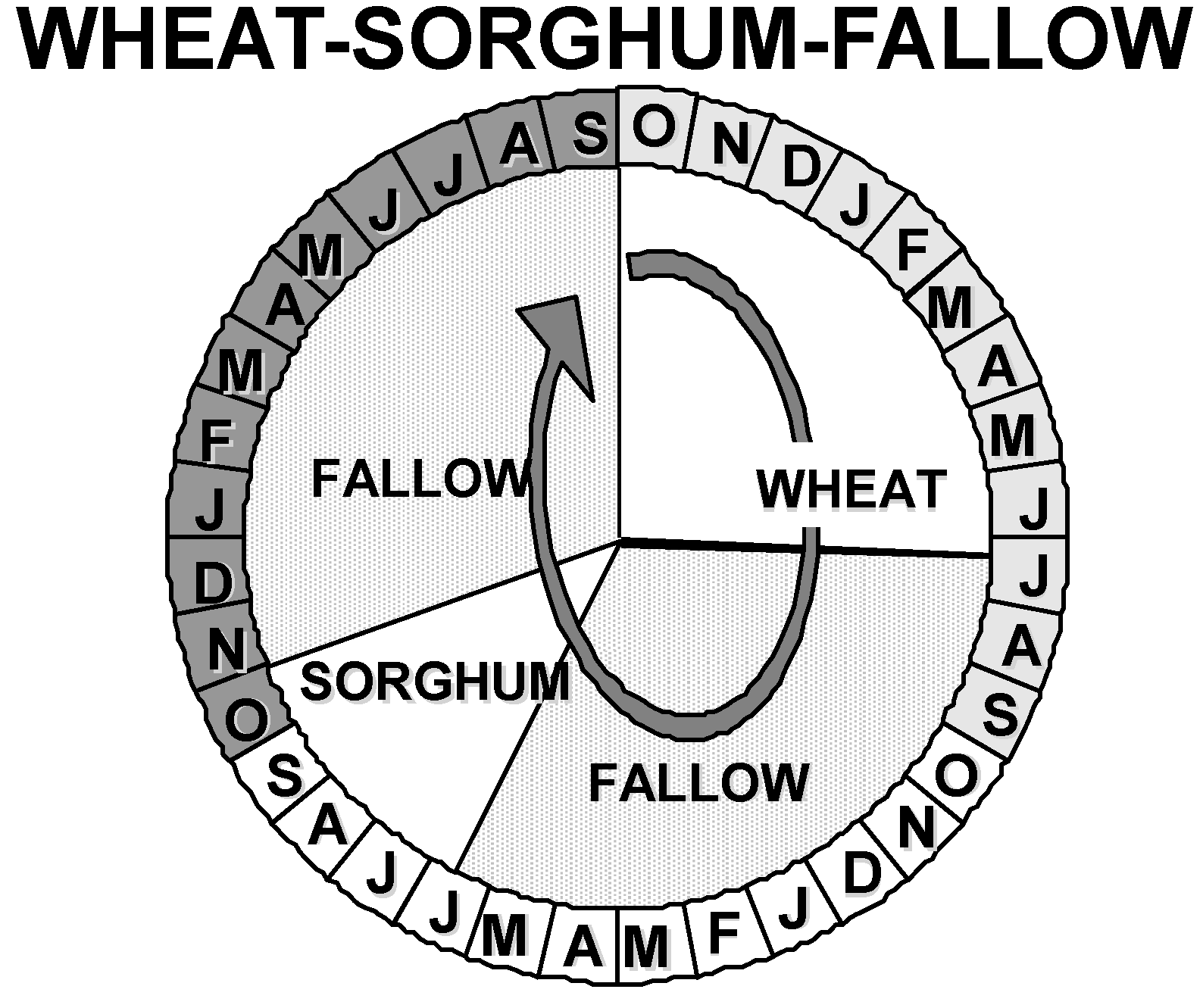
3.4. Engineering Strategies
4. Concluding Remarks
Acknowledgments
Author Contributions
Conflicts of Interest
References
- Oldeman, L.R. Global Extent of Soil Degradation. In ISRIC Bi-Annual Report 1991–1992; International Soil Reference and Information Centre: Wageningen, The Netherlands, 1992; pp. 19–36. [Google Scholar]
- Nickerson, C.; Ebel, R.; Borchers, A.; Carriazo, F. Major Uses of Land in the United States 2007, EIB-89; U.S. Department of Agriculture Economic Research Service: Washington, DC, USA, 2011.
- Mothorpe, C.; Hanson, A.; Schnier, K. The impact of interstate highways on land use conversion. Ann. Reg. Sci. 2013, 51, 833–870. [Google Scholar] [CrossRef]
- Hunt, H.D. Overton’s Overhaul. Available online: http://recenter.tamu.edu/tgrande/?m=123 (accessed on 4 March 2015).
- Douglas, R.S. Overton nearing goal in revitalization efforts. Available online: http://lubbockonline.com/business/2013-08-21/overton-nearing-goal-revitalization-efforts (accessed on 18 July 2014).
- EPA. Mid-Atlantic Mountaintop Mining. U.S. Environmental Protection Agency: 2013. Available online: http://www.epa.gov/region3/mtntop/ (accessed on 18 July 2014).
- Lal, R.; Iivari, T.; Kimble, J.M. Soil Degradation in the United States: Extent, Severity, and Trends; CRC Press LLC.: Boca Raton, FL, USA, 2004; p. 204. [Google Scholar]
- EPA. Superfund. U.S. Environmental Protection Agency: 2014. Available online: http://www.epa.gov/superfund/index.htm (accessed on 18 July 2014).
- Scheppers, D.; Jamison, D.; Nabors, B. Special Report to the Colorado General Assembly: The History, Status and Long-Term Funding Needs of the Colorado CERCLA Program; Colorado Department of Public Health and Environment: Denver, CO, USA, 2012; p. 32. [Google Scholar]
- Herron, J.; Stover, B.; Krabacher, P. Reclamation Feasibility Report: Animas River below Eureka; Colorado Division of Minerals and Geology: Denver, CO, USA, 2000; p. 148. [Google Scholar]
- Neuman, D. Revegetation of Sediments from Montana’s Milltown Dam. In Proceedings of the Mine Design, Operations & Closure Conference, Fairmont, MT, USA, 27 April 2014.
- Baumhardt, R.L. The Dust Bowl Era. In Encyclopedia of Water Science; Stewart, B.A., Howell, T.A., Eds.; Marcel-Dekker: New York, NY, USA, 2003; pp. 187–191. [Google Scholar]
- Dabney, S.M.; Shields, F.D.; Binger, R.L.; Kuhnle, R.A.; Rigby, J.R. Watershed management for erosion and sedimentation control case study Goodwin Creek, Panola County, MS. In Advances in Soil Science, Soil Water and Agronomic Productivity; Lal, R., Stewart, B.A., Eds.; Taylor & Francis: Boca Raton, FL, USA, 2012; pp. 539–568. [Google Scholar]
- Whitney, M. U.S. Department of Agriculture Bureau of Soils Bulletin No. 55. Soils of the United States: Part I. Results of recent soil investigations & Part II. Classification and distribution of the soils of the United States. Available online: http://books.google.com/books?id=th8ZAQAAIAAJ (accessed on 21 July 2014).
- Campbell, H.H. A Complete Guide to Scientific Agriculture as Adapted to the Semi-Arid Regions; The Campbell Soil Culture Co.: Lincoln, NE, USA, 1907. [Google Scholar]
- Lal, R.; Reicosky, D.L.; Hanson, J.D. Evolution of the plow over 10,000 years and the rationale for no-till farming. Soil Tillage Res. 2007, 93, 1–12. [Google Scholar] [CrossRef]
- Coughenour, C.M.; Chamala, S. Conservation Tillage and Cropping Innovation: Constructing the New Culture of Agriculture; Iowa State University Press: Ames, IA, USA, 2000; p. 360. [Google Scholar]
- Binswanger, H. Agricultural mechanization: A comparative historical perspective. World Bank Res. Obs. 1986, 1, 27–56. [Google Scholar] [CrossRef]
- Himes, F.L. Nitrogen, sulfur, and phosphorus and the sequestering of carbon. In Soil Processes and the Carbon Cycle; Advances in Soil Science; Lal, R., Kimble, J.M., Follett, R.F., Stewart, B.A., Eds.; CRC Press: Boca Raton, FL, USA, 1998; pp. 315–319. [Google Scholar]
- Rasmussen, P.E.; Albrecht, S.L. Crop management effects on organic carbon in semi-arid Pacific Northwest soils. In Management of Carbon Sequestration in Soil; Advances in Soil Science; Lal, R., Kimble, J.M., Follett, R.F., Stewart, B.A., Eds.; CRC Press: Boca Raton, FL, USA, 1997; pp. 209–219. [Google Scholar]
- Aase, J.K.; Pikul, J.L. Crop and soil response to long-term tillage practices in the northern Great Plains. Agron. J. 1995, 87, 652–656. [Google Scholar] [CrossRef]
- Halvorson, A.D.; Wienhold, B.J.; Black, A.L. Tillage, nitrogen, and cropping system effects on soil carbon sequestration. Soil Sci. Soc. Am. J. 2002, 66, 906–912. [Google Scholar] [CrossRef]
- Peterson, G.A.; Halvorson, A.D.; Havlin, J.L.; Jones, O.R.; Lyon, D.G.; Tanaka, D.L. Reduced tillage and increasing cropping intensity in the Great Plains conserve soil carbon. Soil Tillage Res. 1998, 47, 207–218. [Google Scholar] [CrossRef]
- Aase, J.K.; Schaefer, G.M. Economics of tillage practices and spring wheat and barley crop sequence in northern Great Plains. J. Soil Water Conserv. 1996, 51, 167–170. [Google Scholar]
- Hudson, B.D. Soil organic matter and available water capacity. J. Soil Water Conserv. 1994, 49, 189–194. [Google Scholar]
- Beare, M.H.; Hendrix, P.F.; Coleman, D.C. Water-stable aggregates and organic matter fractions in conventional- and no-tillage soils. Soil Sci. Soc. Am. J. 1994, 58, 777–786. [Google Scholar] [CrossRef]
- Cambardella, C.A.; Elliott, E.T. Carbon and nitrogen distribution in aggregates from cultivated and native grassland soils. Soil Sci. Soc. Am. J. 1993, 57, 1071–1076. [Google Scholar] [CrossRef]
- Six, J.; Paustian, K.; Elliott, E.T.; Combrink, C. Soil structure and organic matter: I. Distribution of aggregate size classes and aggregate-associated carbon. Soil Sci. Soc. Am. J. 2000, 64, 681–689. [Google Scholar] [CrossRef]
- Sainju, U.M.; Caesar-TonThat, T.; Lenssen, A.W.; Evans, R.G.; Kohlberg, R. Tillage and cropping sequence impact on nitrogen cycling in dryland farming in eastern Montana, USA. Soil Tillage Res. 2009, 103, 332–341. [Google Scholar] [CrossRef]
- Kuo, S.; Sainju, U.M.; Jellum, E.J. Winter cover crop effects on soil organic carbon and carbohydrate. Soil Sci. Soc. Am. J. 1997, 61, 145–152. [Google Scholar] [CrossRef]
- Clapp, C.E.; Allmaras, R.R.; Layese, M.F.; Linden, D.R.; Dowdy, R.H. Soil organic carbon and 13C abundance as related to tillage, crop residue, and nitrogen fertilizer under continuous corn management in Minnesota. Soil Tillage Res. 2000, 55, 127–142. [Google Scholar] [CrossRef]
- Sainju, U.M.; Whitehead, W.F.; Singh, B.P. Cover crops and nitrogen fertilization effects on soil aggregation and carbon and nitrogen pools. Can. J. Soil Sci. 2003, 83, 155–165. [Google Scholar] [CrossRef]
- Raimbault, B.A.; Vyn, T.J. Crop rotation and tillage effects on corn growth and soil structural stability. Agron. J. 1991, 83, 973–985. [Google Scholar] [CrossRef]
- Blanco-Canqui, H. Energy crops and their implications on soil and environment. Agron. J. 2010, 102, 403–419. [Google Scholar] [CrossRef]
- Miller, P.R.; McConkey, B.; Clayton, G.W.; Brandt, S.A.; Staricka, J.A.; Johnston, A.M.; Lafond, G.P.; Schatz, B.G.; Baltensperger, D.D.; Neill, K.E. Pulse crop adaptation in the northern Great Plains. Agron. J. 2002, 94, 261–272. [Google Scholar] [CrossRef]
- Omay, A.B.; Rice, C.W.; Maddux, L.D.; Gordon, W.B. Changes in soil microbial and chemical properties under long-term crop rotation and fertilization. Soil Sci. Soc. Am. J. 1997, 61, 1672–1678. [Google Scholar] [CrossRef]
- Sainju, U.M.; Stevens, W.B.; Caesar-Tonthat, T. Soil carbon and crop yields affected by irrigation, tillage, crop rotation, and nitrogen fertilization. Soil Sci. Soc. Am. J. 2014, 78, 936–948. [Google Scholar] [CrossRef]
- Varvel, G.E.; Wilhelm, W.W. Soil carbon levels in irrigated western Corn Belt rotations. Agron. J. 2008, 100, 1180–1184. [Google Scholar] [CrossRef]
- Bennett, H.H.; Chapline, W.R. Soil Erosion: A National Menace. In U.S. Department of Agriculture Circular No. 33; U.S. Government Printing Office: Washington, DC, USA, 1928; pp. 20–23. [Google Scholar]
- USDA-NRCS. 75 Years Helping People Help the Land: A Brief History of NRCS; U.S. Department of Agriculture Natural Resources Conservation Service: Washington, DC, USA, 2014. Available online: http://www.nrcs.usda.gov/wps/portal/nrcs/detail/national/about/history/?cid=nrcs143_021392 (accessed on 21 July 2014).
- USDA-NRCS. Soil Erosion on Cropland 2007; U.S. Department of Agriculture Natural Resources Conservation Service: Washington, DC, USA, 2007. Available online: http://www.nrcs.usda.gov/wps/portal/nrcs/detail/national/technical/nra/nri/?cid=stelprdb1041887 (accessed on 17 July 2014).
- Brady, N.C.; Weil, R.R. The Nature and Properties of Soils, 14th ed.; Pearson Education, Inc.: Upper Saddle River, NJ, USA, 2008. [Google Scholar]
- Liebig, M.A.; Varvel, G.E.; Doran, J.W.; Wienhold, B.J. Crop sequence and nitrogen fertilization effects on soil properties in western Corn Belt. Soil Sci. Soc. Am. J. 2002, 66, 596–601. [Google Scholar] [CrossRef]
- Tarkalson, D.D.; Hergert, G.W.; Cassman, K.G. Long-term effects of tillage on soil chemical properties and grain yields of a dryland winter wheat-sorghum/corn-fallow rotation in the Great Plains. Agron. J. 2006, 98, 26–33. [Google Scholar] [CrossRef]
- Sainju, U.M. Tillage, cropping sequence, and nitrogen fertilization influence dryland soil nitrogen. Agron. J. 2013, 105, 1253–1263. [Google Scholar] [CrossRef]
- Wilhelm, W.W.; Johnson, J.M.F.; Hatfield, J.L.; Voorhees, W.B.; Linden, D.R. Crop and soil productivity response to corn residue removal: A literature review. Agron. J. 2004, 96, 1–17. [Google Scholar] [CrossRef]
- Mahler, R.L.; Harder, R.W. The influence of tillage methods, cropping sequence, and N rates on the acidification of a northern Idaho soil. Soil Sci. 1984, 137, 52–60. [Google Scholar] [CrossRef]
- Chen, S.H.; Collamer, D.J.; Gearhart, M.M. The effect of different ammonical nitrogen sources on soil acidification. Soil Sci. 2008, 173, 544–551. [Google Scholar] [CrossRef]
- Herrero, M.; Thorton, P.K.; Notenbaert, A.M.; Wood, S.; Msangi, S.; Freeman, H.A.; Bossio, D.; Dixon, J.; Peters, M.; van de Steeg, J.; et al. Smart investments in sustainable food productions: Revisiting mixed crop-livestock systems. Science 2010, 327, 822–825. [Google Scholar] [CrossRef] [PubMed]
- Lilienfein, J.; Wilcke, W.; Vilela, L.; Lima, S.D.; Thomas, R.; Zech, W. Effect of no-till and conventional tillage systems on the chemical composition of soils solid phase and soil solution of Brazilian Savanna soils. J. Plant Nutr. Soil Sci. 2000, 163, 411–419. [Google Scholar] [CrossRef]
- Food and Agriculture Organization (FAO). Salt-Affected Soils; United Nations: Rome, Italy, 2014. Available online: http://www.fao.org/soils-portal/soil-management/management-of-some-problem-soils/salt-affected-soils/more-information-on-salt-affected-soils/en (accessed on 20 July 2014).
- Van der Pluym, H.S.A. Extent, causes, and control of dryland saline seepage in the northern Great Plains regions of North America. Dryland Saline Seep Control. In Proceedings of the 11th International Soil Science Congress, Sub-Commission on salt affected soils, Edmonton, AL, Canada, 19–27 June 1978; pp. 48–58.
- Black, A.L.; Brown, P.L.; Halvorson, A.D.; Siddoway, F.H. Dryland cropping strategies for efficient water use to control saline seeps in the northern Great Plains, USA. Agric. Water Manag. 1981, 4, 295–311. [Google Scholar] [CrossRef]
- MAFRI. Soil Management Guide. Available online: http://www.gov.mb.ca/agriculture/environment/soil-management/soil-management-guide/index.html (accessed on 20 July 2014).
- Schaible, G.D.; Aillery, M.P. Water Conservation in Irrigated Agriculture: Trends and Challenges in the Face of Emerging Demands. EIB-99; U.S. Department of Agriculture Economic Research Service: Washington, DC, USA, 2012.
- Postel, S. Pillar of Sand: Can the Irrigation Miracle Last? W.W. Norton & Company: New York, NY, USA, 1999; p. 313. [Google Scholar]
- Owens, H. Tillage: From Plow to Chisel and No-Tillage, 1930–1999; Iowa State University MidWest Plan Service: Ames, IA, USA, 2001; p. 35. [Google Scholar]
- McCarthy, J.R.; Pfost, D.L.; Currence, H.D. Conservation tillage and residue management to reduce soil erosion. Available online: http://extension.missouri.edu/p/G1650 (accessed on 22 July 2014).
- Stewart, B.A.; Baumhardt, R.L.; Evett, S.R. Major Advances of Soil and Water Conservation in the U.S. Southern Great Plains. In Soil and Water Conservation Advances in the United States; Special Publication 60; Zobeck, T.M., William, F.S., Eds.; Soil Science Society of America: Madison, WI, USA, 2010; pp. 103–130. [Google Scholar]
- Caesar-TonThat, T.; Stevens, W.B.; Sainju, U.M.; Caesar, A.J.; Gaskin, J.F.; West, M.S. Soil-aggregating bacterial community as affected by irrigation, tillage, and cropping system in the northern Great Plains. Soil Sci. 2014, 179, 11–20. [Google Scholar] [CrossRef]
- Baumhardt, R.L.; Blanco-Canqui, H. Soil Conservation practices. In Encyclopedia of Agriculture and Food Systems; Van Alfen, N., Ed.; Elsevier: San Diego, CA, USA, 2014; Volume 5, pp. 153–165. [Google Scholar]
- CTIC. National Crop Management Survey; Conservation Technology Information Center: West Lafayette, IN, USA, 2012. Available online: http://www.ctic.org/CRM/ (accessed on 18 July 2014).
- USDA-NRCS. Soil Erosion. Conservation Resource Brief Number 0602; U.S. Department of Agriculture Natural Resources Conservation Service: Washington, DC, USA, 2006.
- U.S. Department of Agriculture Natural Resources Conservation Service (USDA-NRCS). Summary Report: 2010 National Resources Inventory; USDA-NRCS: Washington, DC, USA, 2010. Available online: http://www.nrcs.usda.gov/Internet/FSE_DOCUMENTS/stelprdb1167354.pdf (accessed on 17 July 2014).
- Van Pelt, R.S.; Baddock, M.C.; Zobeck, T.M.; Schlegel, A.J.; Vigil, M.F.; Acosta-Martinez, V. Field wind tunnel testing of two silt loam soils on the North American Central High Plains. J. Aeolian Res. 2013, 10, 53–59. [Google Scholar] [CrossRef]
- Blanco-Canqui, H.; Stone, L.R.; Schlegel, A.J.; Lyon, D.J.; Vigil, M.F.; Mikha, M.M.; Stahlman, P.W.; Rice, C.W. No-till induced increase in organic carbon reduces maximum bulk density of soils. Soil Sci. Soc. Am. J. 2009, 73, 1871–1879. [Google Scholar] [CrossRef]
- Merrill, S.D.; Black, A.L.; Fryrear, D.W.; Saleh, A.; Zobeck, T.M.; Halvorson, A.D.; Tanaka, D.L. Soil wind erosion hazard of spring wheat-fallow as affected by long-term climate and tillage. Soil Sci. Soc. Am. J. 1999, 63, 1768–1777. [Google Scholar] [CrossRef]
- Sainju, U.M. Cropping sequence and nitrogen fertilization impact on surface residue, soil carbon sequestration, and crop yields. Agron. J. 2014, 106, 1231–1242. [Google Scholar] [CrossRef]
- Zibilske, L.M.; Bradford, J.M.; Smart, J.R. Conservation tillage-induced changes in organic carbon, total nitrogen, and available phosphorus in a semi-arid alkaline subtropical soil. Soil Tillage Res. 2002, 66, 153–163. [Google Scholar] [CrossRef]
- Statistics Agriculture. Chapter 5 No-till Practices Increased; Statistics Agriculture: Ottawa, ON, Canada, 2012. Available online: http://www.statcan.gc.ca/pub/95-640-x/2012002/05-eng.htm (accessed on 18 July 2014).
- McConkey, B.G.; Lobb, D.A.; Li, S.; Black, J.M.W.; Krug, P.M. Soil erosion on cropland: Introduction and trends for Canada. Canadian Biodiversity: Ecosystem Status and Trends 2010; Technical Thematic Report No. 16. Canadian Councils of Resource Ministers: Ottawa, ON, Canada, 2012. Available online: http://www.speciesatrisk.ca/resource/DOCUMENT/6178No.16_Soil%20Erosion_Jun2012_E.pdf (accessed on 17 July 2014).
- Reeves, D.W. Cover crops and rotations. In Crops Residue Management, Advances in Soil Science; Hatfield, J.L., Stewart, B.A., Eds.; Lewis Publishers: Boca Raton, FL, USA, 1994; pp. 125–172. [Google Scholar]
- Delgado, J.A.; Reeves, W.; Follett, R. Winter cover crops. In Encyclopedia of Soil Science; Lal, R., Ed.; Markel and Decker: New York, NY, USA, 2006; pp. 1915–1917. [Google Scholar]
- Balkcom, K.S.; Schomberg, H.H.; Reeves, D.W.; Clark, A.; Baumhardt, R.L.; Collins, H.P.; Delgado, J.A.; Kaspar, T.C.; Mitchell, J.; Duiker, S. Managing cover crops in conservation tillage systems. In Managing Cover Crops Profitably, 3rd ed.; Clark, A., Ed.; Handbook Series Book 9; Sustainable Agriculture Network: Beltsville, MD, USA, 2007; pp. 44–61. [Google Scholar]
- Keeling, W.; Segarra, E.; Abernathy, J.R. Evaluation of conservation tillage cropping systems for cotton on the Texas southern High Plains. J. Prod. Agric. 1989, 2, 269–273. [Google Scholar] [CrossRef]
- Baumhardt, R.L.; Lascano, R.J. Water budget and yield of dryland cotton intercropped with teminated winter wheat. Agron. J. 1999, 91, 922–927. [Google Scholar] [CrossRef]
- Unger, P.W.; Vigil, M.F. Cover crop effects on soil water relationships. J. Soil Water Conserv. 1998, 53, 200–207. [Google Scholar]
- Nielsen, D.C.; Vigil, M.F. Legume green fallow effect on soil water content at wheat planting and wheat yield. Agron. J. 2005, 97, 684–689. [Google Scholar] [CrossRef]
- McVay, K.A.; Radcliffe, D.E.; Hargrove, W.L. Winter legume effects on soil properties and nitrogen fertilizer requirements. Soil Sci. Soc. Am. J. 1989, 53, 1856–1862. [Google Scholar] [CrossRef]
- Langdale, G.W.; Blevins, R.L.; Karlen, D.L.; McCool, D.K.; Nearing, M.A.; Skidmore, E.L.; Thomas, A.D.; Tyler, D.D.; Williams, J.R. Cover crop effects on soil erosion by wind and water. In Cover Crops for Clean Water; Hargrove, W.L., Ed.; Soil and Water Conservation Society: Ankeny, IA, USA, 1991; pp. 15–22. [Google Scholar]
- Meisinger, J.J.; Hargrove, W.L.; Mikkelsen, R.L.; Williams, J.R.; Benson, V.E. Effect of cover crops on groundwater quality. In Cover Crops for Clean Water; Hargrove, W.L., Ed.; Soil and Water Conservation Society: Ankeny, IA, USA, 1991; pp. 57–68. [Google Scholar]
- Strock, J.S.; Porter, P.M.; Russelle, M.P. Cover cropping to reduce nitrate loss through subsurface drainage in the northern U.S. Corn Belt. J. Environ. Qual. 2004, 33, 1010–1016. [Google Scholar] [CrossRef] [PubMed]
- Malone, R.W.; Jaynes, D.B.; Kaspar, T.C.; Thorp, K.R.; Kladivko, E.; Ma, L.; James, D.E.; Singer, J.; Morin, X.K.; Searchinger, T. Cover crops in the upper midwestern United States: Simulated effect on nitrate leaching with artificial drainage. J. Soil Water Conserv. 2014, 69, 192–305. [Google Scholar] [CrossRef]
- Lal, R.; Kimble, J.M.; Follett, R.F.; Cole, C.V. The Potential of U.S. Cropland to Sequester Carbon and Mitigate the Greenhouse Effect; Sleeping Bear Press, Inc.: Chelsea, MI, USA, 1998. [Google Scholar]
- Baumhardt, R.L.; Anderson, R.L. Crop choices and rotation principles. In Dryland Agriculture, 2nd ed.; Agronomy Monograph No. 23; Peterson, G.A., Unger, P.W., Payne, W.A., Eds.; ASA, CSSA, and SSSA: Madison, WI, USA, 2006; pp. 113–139. [Google Scholar]
- Lemke, R.L.; VandenBygaart, A.J.; Campbell, C.A.; Lafond, G.P.; McConkey, B.G.; Grant, B. Long-term effects of crop rotations and fertilization on soil C and N in a thin Black Chernozem in southeastern Saskatchewan. Can. J. Soil Sci. 2012, 92, 449–461. [Google Scholar] [CrossRef]
- Hansen, N.C.; Allen, B.L.; Baumhardt, R.L.; Lyon, D.J. Research achievements and adoption of no-till, dryland cropping in the semi-arid U.S. Great Plains. Field Crops Res. 2012, 132, 196–203. [Google Scholar] [CrossRef]
- Baumhardt, R.L.; Johnson, G.L.; Schwartz, R.C. Residue and long-term tillage and crop rotation effects on rain infiltration and sediment transport. Soil Sci. Soc. Am. J. 2012, 76, 1370–1378. [Google Scholar] [CrossRef]
- Blanco-Canqui, H.; Holman, J.D.; Schlegel, A.J.; Tatarko, J.; Shaver, T.M. Replacing fallow with cover crops in a semiarid soil: Effects on Soil Properties. Soil Sci. Soc. Am. J. 2013, 77, 1026–1034. [Google Scholar] [CrossRef]
- Franzluebbers, A.J. Integrated crop-livestock systems in the southeastern USA. Agron. J. 2007, 99, 361–372. [Google Scholar] [CrossRef]
- Sainju, U.M.; Lenssen, A.W.; Goosey, H.; Snyder, E.; Hatfield, P. Dryland soil carbon and nitrogen influenced by sheep grazing in the wheat-fallow system. Agron. J. 2010, 102, 1553–1561. [Google Scholar] [CrossRef]
- Franzluebbers, A.J.; Stuedemann, J.A. Early response of soil organic carbon fractions to tillage and integrated crop-livestock production. Soil Sci. Soc. Am. J. 2008, 72, 613–625. [Google Scholar] [CrossRef]
- Baumhardt, R.L.; Schwartz, R.C.; Greene, L.W.; MacDonald, J. Cattle grazing effects on yield of dryland wheat and sorghum grown in rotation. Agron. J. 2009, 101, 150–158. [Google Scholar] [CrossRef]
- Lowery, B.; Schuler, R.T. Temporal effect of subsoil compaction on soil strength and plant growth. Soil Sci. Soc. Am. J. 1991, 55, 216–223. [Google Scholar] [CrossRef]
- Soil Science Society of America (SSSA). Glossary of Soil Science Terms; SSSA: Madison, WI, USA, 1997. [Google Scholar]
- Lal, R. Axle load and tillage effects on crop yields in a Mollic Ochraquarf in northwest Ohio. Soil Tillage Res. 1996, 37, 143–160. [Google Scholar] [CrossRef]
- U.S. Census Bureau. International Data Base World Population: 1950–2050; U.S. Census Bureau: Washington, DC, USA, 2013. Available online: http://www.census.gov/population/international/data/idb/worldpopgraph.php (accessed on 30 August 2014).
- Postel, S.L. Water for Food Production: Will There Be Enough in 2025? BioScience 1998, 48, 629–637. [Google Scholar] [CrossRef]
- Ausubel, J.H.; Wernick, I.K.; Waggoner, P.E. Peak Farmland and the Prospect for Land Sparing. Popul. Dev. Rev. 2013, 38, 221–242. [Google Scholar] [CrossRef]
- Lal, R.; Stewart, B.A. Need for Action: Research and development priorities. In Soil Degradation; Advances in Soil Science 11; Lal, R., Stewart, B.A., Eds.; Springer: New York, NY, USA, 1990; pp. 331–336. [Google Scholar]
© 2015 by the authors; licensee MDPI, Basel, Switzerland. This article is an open access article distributed under the terms and conditions of the Creative Commons Attribution license (http://creativecommons.org/licenses/by/4.0/).
Share and Cite
Baumhardt, R.L.; Stewart, B.A.; Sainju, U.M. North American Soil Degradation: Processes, Practices, and Mitigating Strategies. Sustainability 2015, 7, 2936-2960. https://doi.org/10.3390/su7032936
Baumhardt RL, Stewart BA, Sainju UM. North American Soil Degradation: Processes, Practices, and Mitigating Strategies. Sustainability. 2015; 7(3):2936-2960. https://doi.org/10.3390/su7032936
Chicago/Turabian StyleBaumhardt, R. L., B. A. Stewart, and U. M. Sainju. 2015. "North American Soil Degradation: Processes, Practices, and Mitigating Strategies" Sustainability 7, no. 3: 2936-2960. https://doi.org/10.3390/su7032936
APA StyleBaumhardt, R. L., Stewart, B. A., & Sainju, U. M. (2015). North American Soil Degradation: Processes, Practices, and Mitigating Strategies. Sustainability, 7(3), 2936-2960. https://doi.org/10.3390/su7032936






